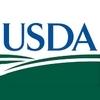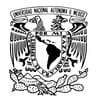Explore all the information on
Avian influenza
Avian influenza is a viral infection found in domestic poultry and a wide range of other birds. Wild waterfowl and shorebirds are often subclinically affected carriers of the virus. In poultry, low-pathogenicity strains can cause subclinical infections; however, some strains typically cause respiratory signs or decreased egg production. Highly pathogenic strains may cause widespread organ failure and sudden death, often with high mortality rates. Diagnosis is based on detection of the viral genome or specific antibodies or on virus isolation. Antimicrobials may help control secondary bacterial infection in flocks affected by low-pathogenicity strains. Antiviral drugs are not approved or recommended. Prevention is best accomplished by biosecurity measures. Vaccines matched for antigenic type can greatly increase resistance to infection, prevent clinical signs, and decrease viral shedding in infected flocks.
The 2022–2023 highly pathogenic avian influenza (HPAI) H5N1 outbreak in the United States (U.S.) is the most geographically extensive and costly animal health event in U.S. history. In 2022 alone, over 57 million commercial and backyard poultry in 47 U.S. states were affected. Over 75% of the affected poultry were part of the commercial table egg production sector. Methods: We conducted a case–control study to identify potential risk factors for the introduction of the HPAI virus...
Comments : 0
Recommendations: 0
The 2022–2023 highly pathogenic avian influenza (HPAI) H5N1 outbreak in the United States (U.S.) is the largest and most costly animal health event in U.S. history. Approximately 70% of commercial farms affected during this outbreak have been turkey farms. We conducted a case-control study to identify potential risk factors for the introduction of the HPAI virus into commercial meat turkey operations. Data were collected from 66 case farms and 59 control farms in 12 states. Univariate...
Comments : 0
Recommendations: 0


Bacillus licheniformis-Fermented Products Improve Growth Performance and Intestinal Gut Morphology in Broilers under Clostridium perfringens Challenges (Extract)
Suggested link
Avian Influenza Virus (AIV) poses a significant threat to both avian populations and human health due to its potential for zoonotic transmission. The emergence of highly pathogenic strains necessitates the development of innovative control strategies. This abstract presents a comprehensive overview of the potential of CRISPR-based technologies, Quorum Sensing (QS) systems, and the application of the synthetic inducer molecule Arbitrium as strategic control measures for mitigating AIV...
Comments : 0
Recommendations: 1
Highly pathogenic avian influenza virus (HPAIV) H5N1 poses a significant threat to both commercial poultry operations and wild bird populations worldwide. South America, with its rich avian biodiversity and extensive poultry industry, is susceptible to the introduction and spread of this devastating virus. This study explores the imminent challenges and potential outcomes associated with the upcoming bird migration season in South America, focusing on the detection and incidence of HPAIV...
Comments : 0
Recommendations: 0
In Chile, from December 5, 2022, to date (August 30), 892 HPAI H5N1 HPAI-positive samples have been detected in wild birds, affecting 50 species, with 94 zones under control. To date, more than 35,000 wild birds are dead. In addition, 175 positive backyard bird premises have been detected, with more the 14,000 birds culling distributed in the 16 regions of the country in 97 zones under sanitary control. This is the event 4,775 registered in the WAHIS system. In addition, since March 13,...
Comments : 0
Recommendations: 0
The poultry industry plays a pivotal role in meeting global demands for protein-rich food. However, it faces significant challenges due to emerging infectious diseases, environmental concerns, and ethical considerations surrounding animal welfare. This abstract presents a comprehensive perspective on the integration of biosecurity measures within the framework of One Health, with the aim of enhancing the overall health, welfare, and productivity of commercial poultry operations. The concept...
Comments : 0
Recommendations: 0
.jpg&w=3840&q=75)

Candidate Genes Associated with Survival Following Highly Pathogenic Avian Influenza Infection in Chickens
Suggested link
Viral diseases that affect the respiratory system of poultry, such as Avian Infectious Bronchitis (IBV), Newcastle Disease (ND), and Avian Influenza (IFV), have a significant and detrimental impact on the health of the animals. This, in turn, has negative consequences for the profitability of poultry producers. To control these types of diseases, the poultry industry has primarily relied on strengthening biosecurity plans, along with the implementation of various vaccination strategies....
Comments : 0
Recommendations: 0
The H5N1 avian influenza virus poses a significant threat to poultry populations and human health, with sporadic outbreaks and the potential for pandemic emergence. Traditional vaccine development approaches have faced challenges in achieving broad spectrum protection due to the high mutation rate of the virus. This abstract outlines novel strategies that have emerged to address these hurdles. Firstly, advances in reverse genetics technology have enabled the creation of recombinant vaccines,...
Comments : 0
Recommendations: 1
The experience. The silent entry of the Avian Influenza (AI) virus into Mexican territory, for the experience. In March 1994, a Low Pathogenicity (LP) subtype H5N2 virus entered Mexico stealthily and spread fast in poultry districts. The virus was common in flocks when discovered. It became an HP virus in December, jeopardizing food security. A biological was developed using biosafety. December 1995 saw HPAIfree nation. From January to December 1995, 383 million vaccinations were given. The...
Comments : 0
Recommendations: 1
Avian influenza (AI) significantly threatens global poultry production and public health. Efforts to combat this viral disease have been predominantly focused on vaccination strategies, with limited success in controlling its spread. This study explores a novel approach utilizing genome editing techniques to enhance avian influenza resistance in chickens. Specifically, we employ CRISPR-Cas9 technology to target the ANP32 genes, endogenous proteins co-opted by influenza for replication in...
Comments : 0
Recommendations: 0


Optimal in-feed amino acid ratio for laying hens based on deletion method
Suggested link
The first report of news of an epizootic of Avian Influenza (AI) occurred in the neighborhoods of the city of Turin, Italy, in family poultry farms in 1878, which resulted in high mortality rates. The infection spread to the north and west of Europe, ending a year later in England. It was the distinguished Italian veterinarian Edoardo Bellarmino Perocitto (1847-1936), who created a detailed clinical, pathological, and epidemiological description of this viral infection of birds. In 2014, a...
Comments : 0
Recommendations: 0
Highly Pathogenic Avian Influenza (HPAI), particularly caused by the influenza virus A genus, is a paramount concern for global poultry health. The strains associated with HPAI are known to precipitate mortality rates exceeding 90%. Beyond the immediate and catastrophic impact on poultry, the emergence of HPAI strains disrupts international poultry trade, leading countries to impose trade bans and shake consumer confidence. By September 19th, 2023, Brazil had reported 106 confirmed outbreaks...
Comments : 0
Recommendations: 0
Avian influenza is a highly contagious disease that severely affects poultry production and food security. Several countries have developed vaccination programs to prevent and control avian influenza. Unlike currently available vaccines, modified live virus (MLV) vaccines have the potential to be easily mass-applied. Concerns of reversion, recombination, and unintended transmission have slowed the development of MLVs against avian influenza for use in poultry. To address these concerns, we...
Comments : 0
Recommendations: 0
Avian influenza virus (AIV) is a highly contagious and lethal disease that can have major impacts on the global poultry industry and food supply. While more frequent in Asia and Europe, highly pathogenic avian influenza virus (HPAIV) outbreaks have traditionally been rare in the U.S. However, in recent years, the U.S. has seen an increase in the incidence of HPAIV outbreaks in wild birds and commercial poultry. In 2014/2015 and in 2021/2022, outbreaks of HPAIV subtype H5NX clade 2.3.4.4...
Comments : 0
Recommendations: 0
In the face of escalating global concerns about the occurrence of animal disease outbreaks, effective and sustainable methods for the management of animal mortalities have become a critical component of public health and biosecurity strategies. This abstract presents a comprehensive overview of recent advancements in the field of animal mortality management, with a specific focus on innovative technologies, practices, and policies designed to mitigate the environmental, economic, and health...
Comments : 0
Recommendations: 0
Biosecurity may be defined as protection from pathogens or disease. This may include the separation of the flock from living vectors or inanimate objects called fomites. While prevention of host-specific and zoonotic diseases is important, the commercial poultry industry is already preoccupied with the challenges of day-to-day operations. The purpose of this project was to illustrate how surfaces that may seem clean are heavily contaminated with microorganisms that may be responsible for...
Comments : 0
Recommendations: 0
Avian influenza outbreaks have emerged as a critical threat to global food security as they continue to devastate poultry populations worldwide. This paper addresses the urgent need for an open and comprehensive discussion of novel strategies to mitigate the impact of avian influenza on the poultry food supply chain. The review integrates current scientific literature, epidemiological data, and socio-economic analyses to underscore the severity of the crisis. It highlights the complex...
Comments : 0
Recommendations: 0
The emergence of Highly Pathogenic Avian Influenza (HPAI) strains poses a significant threat to both avian populations and human health. Vaccination has been identified as a critical tool in mitigating the spread of HPAI. However, the acceptance and implementation of avian influenza vaccination programs have been met with opposition from various stakeholders, including poultry producers, public health authorities, and consumers. This abstract provides a comprehensive overview of the evolving...
Comments : 0
Recommendations: 1


Bacillus licheniformis-Fermented Products Improve Growth Performance and Intestinal Gut Morphology in Broilers under Clostridium perfringens Challenges (Extract)
Suggested link
Vaccination against avian influenza requires the assessment of multiple technical, legislative, and trade aspects related to its epidemiology and the country’s veterinary infrastructure, commerce policies, and interests. According to the World Organization of Animal Health (WOAH), vaccination against AI should not preclude a country from eligibility for trade as long as it can prove freedom from natural infection. Importing countries may have policies above the general guidelines...
Comments : 0
Recommendations: 0
Newcastle Disease (ND) and Influenza A (IA) are major poultry diseases affecting both commercial and backyard poultry production worldwide1 . We conducted a Nepal’s first nationwide ND and IA prevalence study in 2018, collecting samples from both in commercial and backyard poultry farms. In commercial and backyard farms prevalence of ND was 70% and 17.5% respectively. We also determined the prevalence of IA in these farms (commercial= 27.5%, backyard= 7.5%). Genotype II was the most...
Comments : 0
Recommendations: 0





.jpg&w=3840&q=75)



























